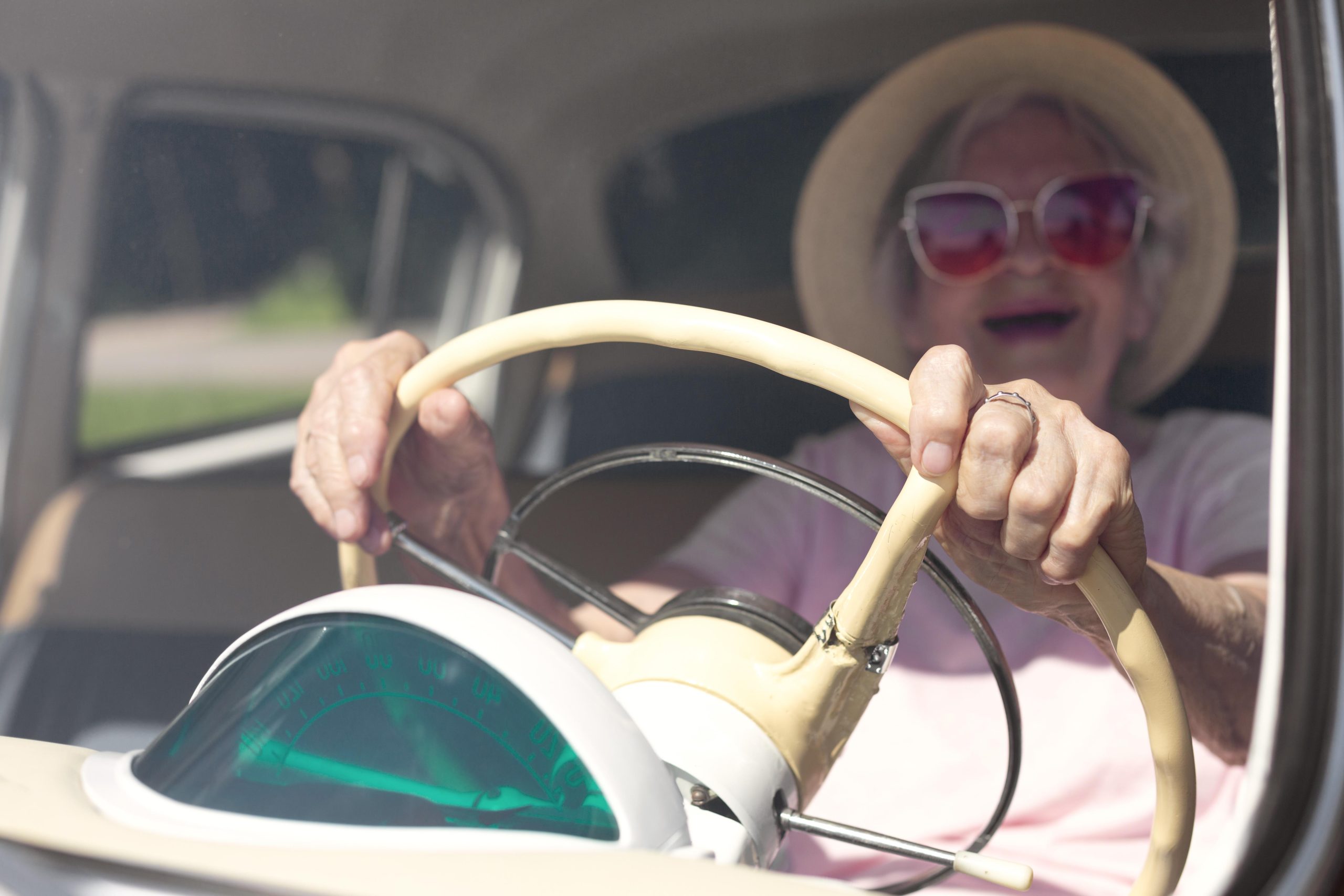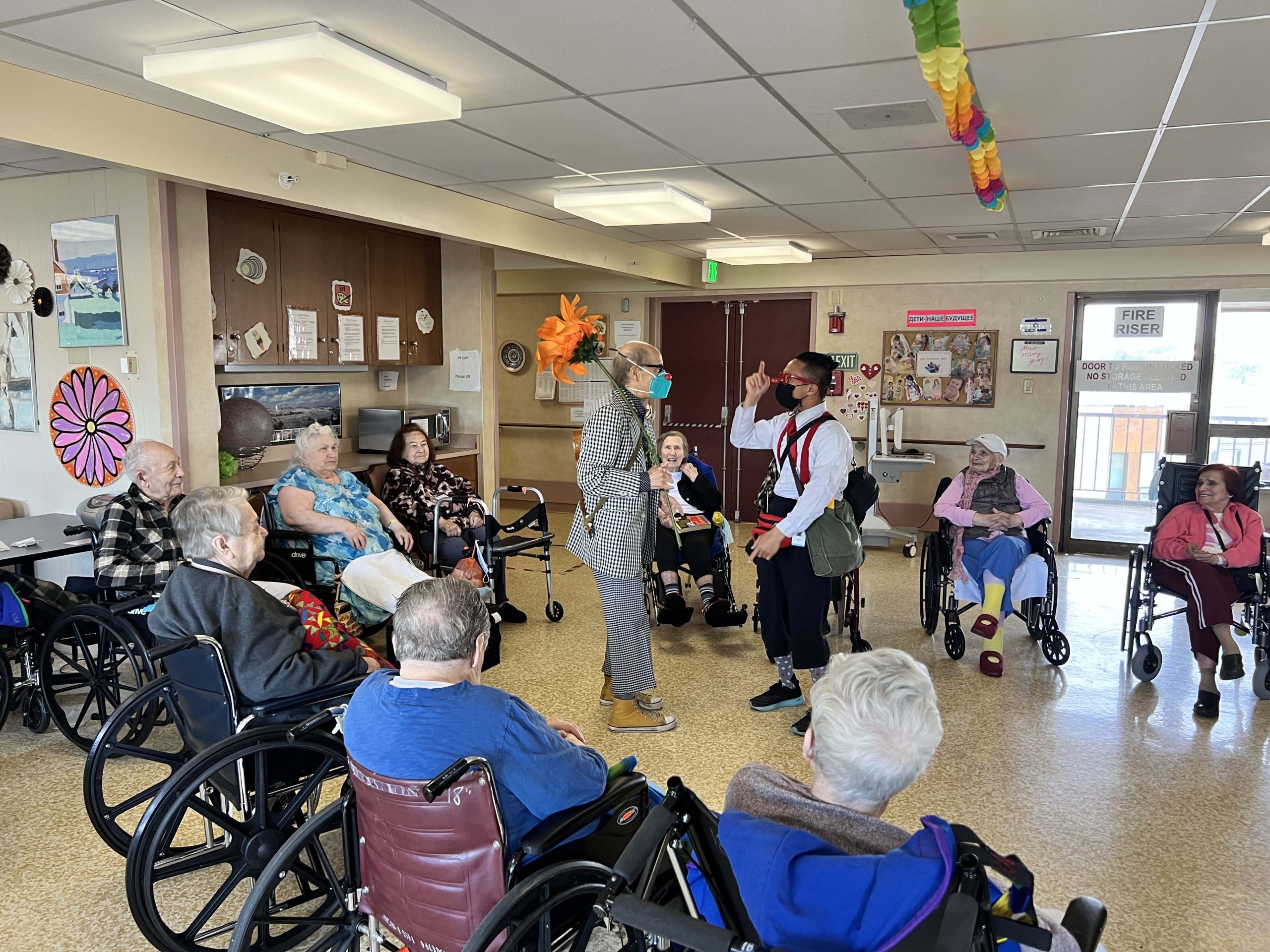Ikebana expert explains that a flower is not always just a flower, a stem not just a supporting actor
In the minimalist flower arranging practice of ikebana, certain rules must be followed: flowers are focal points; plant stems are not just supporting actors but lines in a work of art celebrating all of life.
Begun centuries ago in China, then perfected in Japan, ikebana could be described as a physical manifestation of the Buddhist philosophy of the interconnectedness of all things. The typical three-pointed structure represents humanity, earth, and heaven.
“Ikebana symbolizes the beauty of all components of the natural world, working in harmony. Ikebana practitioners don’t just use flowers and greenery but add twigs, moss, stones, and even fruit,” said Louise Ow Ling, stretching across a conference table to pass her card.
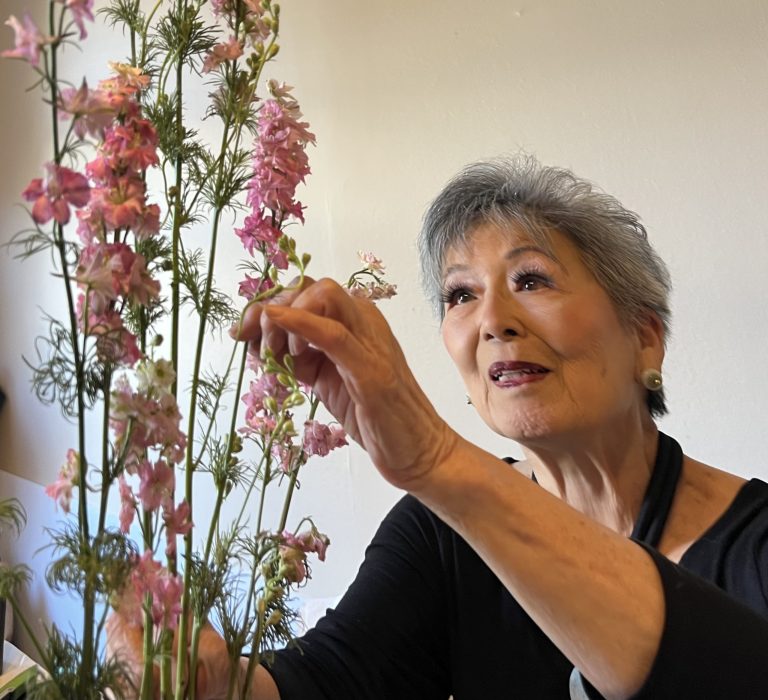
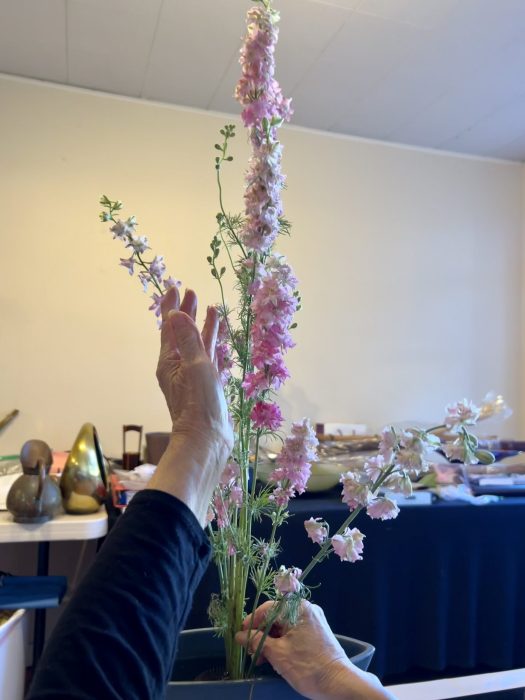
It doesn’t mention her career in healthcare or her performances with Chinatown’s Grant Avenue Follies cabaret dancers. It simply says, “Professor of Ikebana.”
While there are no professorships as such in the art, there are degrees of certification, and Ow Ling has the highest, Level 1, or Nyumon, and 30 years of practice and training. There are dozens of schools of ikebana, all evolving from the practice, beginning in the 8th century in Japan of leaving flower offerings at Buddhist altars. It is one of the three classical Japanese arts of refinement, along with incense appreciation and the tea ceremony.
Ow Ling began her study under the tutelage of local masters, and continues to attend classes. She also has done several study tours in Japan.
She is one of the several hundred kadōka, or practitioners, in the Bay Area. This year, she is co-chair for the 60th Anniversary celebration of the Northern California Chapter of the Ikenobo Ikebana Society, of which she is first-vice president. The festivities will be Oct. 21-23 at the Hotel Kabuki in Japantown. She has lots of decision-making to do, involving gifts to the attendees, entertainment, and communications with the mayor’s office.
The big event
The big annual event for ikebana practitioners is in April, the Cherry Blossom Festival at the Japanese Cultural and Community Center. The ikebana exhibition usually has about 25 entries. Ow Ling was emcee this year at the ikebana exhibit, which attracted 1,500 attendees.
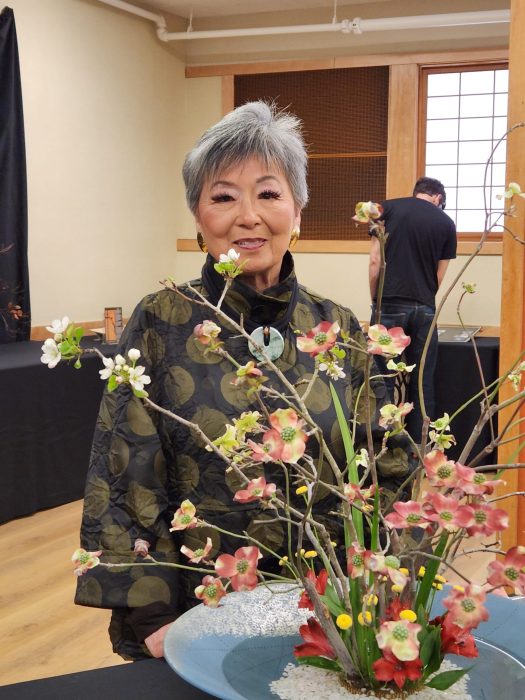
“In the spirit of Ikebana, there are no competitions; no contests for the best entry,” she noted. “No one gets mad.”
It can take days to create an ikebana arrangement, she said, setting up the elements and then making adjustments. Ow Ling usually gets flowers from the San Francisco Flower Mart but has found floral material at Safeway, Trader Joe’s, and even in her own backyard as she walks her dog, Chiko.
As in many Buddhist meditative practices, ikebana can be calming.
“When I arrange the flowers, I think of nothing else but the floral elements and can temporarily separate myself from the concerns of life,” she said. “I find it very satisfying to take time to analyze/enjoy each element to determine how it can be used at its best to make a cohesive whole and express my feelings to the viewer.”
Friendship flowers
She likes to give away her creations to friends and associates, in adherence to the “friendship through flowers” motto of Ikebana International, a conglomerate of schools throughout the world. that teach varying styles of the art. Members are encouraged to have monthly meetings and widely exhibit their work in public forums.
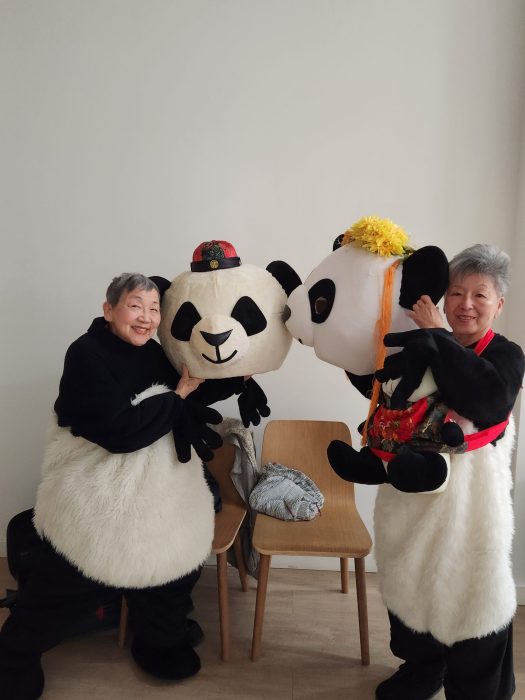
Up until the pandemic, Ow Ling taught ikebana for about five years in a garden studio next to her Inner Richmond home. She had five students, found by word of mouth, who met once a month. She provided the flowers and the students brought their own supplies, taking their creations home with them. “This was not a profit-making operation,” she said. “Each student paid $25.”
She has served in official roles in the Ikebana Society of Northern California and Ikebana International San Francisco Bay Area Chapter for close to 10 years. Today, she is the first vice president of the Ikebana Teachers Federation.
While she enjoys the simplicity and earthbound aspect of ikebana, she also delights in the glitter, feathers, and headdresses of Chinese burlesque theater. She has been a dancer with the Grand Avenue Follies for the last six years. As does ikebana, it nurtures friendships.
“I feel the camaraderie-socialization has prolonged my longevity. There is a strong feeling of sisterhood present,” said Ow Ling, whose practice schedule will soon pick up in advance of a performance in Hawaii later this month.”
Her ability and confidence in performing in public goes back to her youth. “Yes, all those childhood adventures as a member of the St. Mary’s Chinese Girls Drum and Bell Corps as well as my participation in the JFK Inaugural Parade in Washington, D.C., and the Rose Parade in Pasadena, performing in Seattle and Taiwan to celebrate Chang Kai Shek — all paid off.”
In-home health care
Ow Ling celebrated her 80th birthday in July. She retired 14 years ago after a 42-year career as a physical therapist providing health care in the home. She began as an intern with the Visiting Nurses Association, finishing up with 10 years at Kaiser Permanente. Her ability to speak Cantonese gave her an advantage in a community with a large number of non-English speaking Chinese. And she liked being free of an office setting.
“It was interesting traveling to five residences each day, witnessing the family dynamic and how folks learn,” she recalled, “how they try to understand and the level of support they give to their ailing family member.”
In caring for a post-fracture or stroke patient or a client with ongoing physical limitations – mostly seniors – she provided hands-on exercise instruction. She also assessed the home environment, advising clearing out clutter; removing rugs; installing raised toilet seats and shower benches as well as using wireless phones.
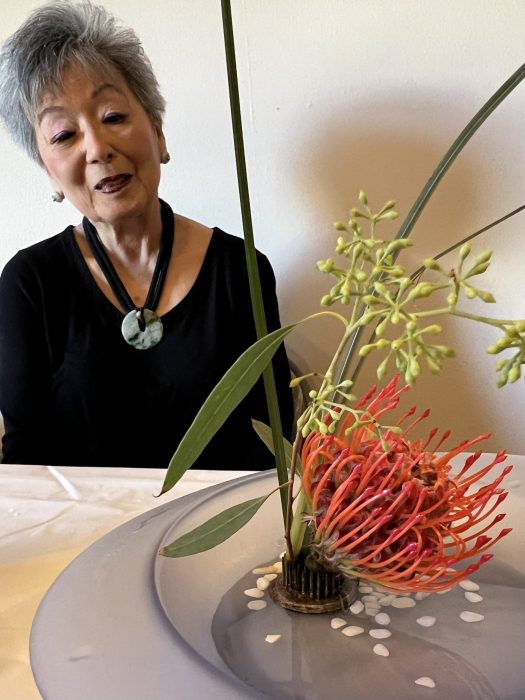
Ow Ling was born in San Francisco’s Chinatown. With one younger brother, she was raised in a conservative middle-income family in a one-bedroom apartment. Her father was a postal clerk and her mother was a sales clerk at “City of Shanghai,” an exclusive Chinatown gift store that is no longer there.
They lived well but simply. “My mother shopped daily, no fast food and we rarely dined out,” she said. “It was too expensive.”
Great expectations
Her mother also expected her children to do well, as she had.
“My mother’s influence was subtle and unspoken. She herself did well in school as a member of the National Honor Society and expected the same from me,” Ow Ling said. “So, there was always the expectation I would attend college though I would have been happy as a waitress
But she didn’t become a waitress. She graduated from San Francisco State College (now university) with a major in biology and a minor in creative arts. She transferred to the University of California-San Francisco Medical Center and graduated with a certificate in physical therapy.
So, when a dear friend who had a stroke and his family was told he would never walk again, she was able to marshal her skills and the ikebana spirit of “all components of the natural world working in harmony.”
“With our hard work together, he was able to walk with a cane and on his own into his neighborhood,” she said. “I worked with him and helped him up to his death.”




